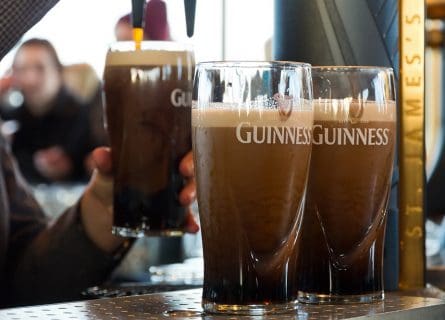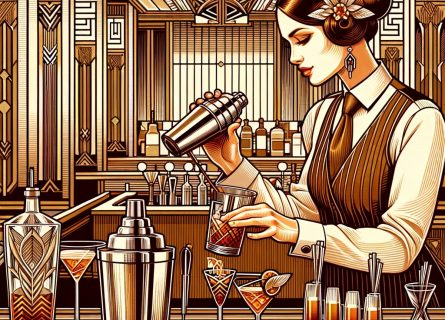Dublin Travel Guide
Dublin: From Viking Origins to Modern Metropolis - A City of Timeless Charm and Vibrant Evolution
It is easy to see Ireland as a lush, green island dotted with quaint, thatched cottages and friendly pubs, a rural bliss permanently stuck in time. Well, stepping foot in the country’s capital soon stops that preconception. Although Dublin is a relatively small city, Ireland’s capital is famous for its nightlife and hospitality, and its rich cultural heritage attracts millions of visitors each year. The city is at the forefront of Ireland’s contrasting reality of rapid economic growth and fundamental political change, although the genuine good humor of the people remains the same.
Dublin began life as a Viking settlement when they founded Dubh Linn (Black Pool) on the banks of the Liffey River in approximately 841 AD. The settlement rapidly grew into a thriving town with a bustling center of trade, including a very lucrative slave trade. As Christianity spread throughout Europe, Dublin’s Danish rulers had little choice but to acquiesce to their citizens’ wishes, and the first Bishop of Dublin was appointed in 1028 AD.
Norman Conquest and Growth
The town prospered under Viking rule, although Ireland’s inhabitants tried to wrestle the city back into Irish control more than once. Dublin was ransacked more than once but always recovered quickly. It soon became Ireland’s largest town, profiting from trade with England. After the Norman invasion and conquest of England in 1066, they eventually turned their attention to Ireland. In 1166, The King of Leinster, MacMurrough, fled his Kingdom in England after an uprising and set his sights on conquering Ireland. With the help of the Earl of Pembroke, he took control of Dublin after the Vikings fled to Denmark. One era had ended, and another one had yet to begin.
MacMurrough did not live long enough to enjoy his conquests, and in 1171, Strongbow was declared King following Mac’s death. He would face a concerted effort by the Vikings to recapture their prize, which failed miserably after the Viking King was captured and executed. The native Irish would also try their luck at capturing Dublin but, again, were thwarted by the superior tactics of the Normans. Recognizing Ireland’s growing power and influence, the English King quickly installed himself as Lord of Ireland, sweeping away any dissidents. Strongbow acquiesced, and Ireland came under direct English control.
Dublin was considered a worthy prize for the merchants of Bristol, as it became an English colony and was ruled by the English for centuries. It thrived as Ireland’s largest city, with trade flourishing and its population growing as people left the surrounding areas to get a taste of the good life. In 1190, a fire destroyed much of the center of Dublin, but it was quickly rebuilt, the side effect being that many of the town’s slums were destroyed and subsequently rebuilt with a better standard of housing.
Turmoil and Rebellions
This age of stability and peace was temporarily shattered when Dublin was besieged by a Scottish army in 1317. In what seemed a drastic move at the time, the authorities in Dublin set fire to the outlining suburbs of the city and the bridge over the Liffey. Many residents lost their homes that night, although the goal was achieved – the Scottish abandoned their siege of the city. More turmoil would visit Dublin during the 16th Century, as the Lord of Ireland was executed, enraging his son Lord Fitzgerald, who renounced English rule. However, the rebellion was doomed to failure as Fitzgerald and his men murdered the Archbishop of Dublin, a popular figure amongst the city’s population. He lost support from the residents of Dublin, and combined with the might of the English army, the uprising was crushed. His men were captured, and Fitzgerald was subsequently executed.
Despite the brief social unrest caused by Fitzgerald’s rebellion, life for many of the citizens of Dublin had never been better. The middle and upper classes thrived on trade with Europe, increasing their wealth dramatically. Nonetheless, the population suffered from repeated plague outbreaks; an outbreak in 1579 killed thousands. The Century would end on a high note as in 1591, Queen Elizabeth I granted a charter for the first University in Dublin, Trinity College. The first students arrived in 1594.
The Plague would revisit Dublin in 1650, the single most devastating occurrence as over half the population lost their lives. Nevertheless, Dublin recovered and prospered in the late 17th and 18th Centuries. This wealth and prosperity was built mainly on a wool and linen trade with England and sustained by French Protestants who fled to Dublin to escape religious persecution. Growth was rapid, with new streets, hospitals, parks, and the Irish parliament all founded in the 18th Century. Dublin was very much on the up!
Famine and Growth
By the start of the 19th Century, the population of Dublin had risen to over 180,000 and was growing rapidly. Major advances to the city’s infrastructure continued with new hospitals and a sewer system, while a railway line was built in 1834.
Dublin played a major role in the great potato famine that caused mass starvation, disease, and immigration in the 19th Century. From 1845 until 1852, over 1 million people died, and a million more emigrated from Ireland, causing the island’s population to fall by 25%. A blight affected the country’s potato crops, which so many of the population depended on. Many workhouses were set up to support the poor in 1838, and they were overwhelmed by the numbers fleeing starvation in the countryside. Ironically, although the population of Ireland fell sharply after the famine, the population of Dublin rose because of the massive influx of the rural population seeking solace in the city.
The latter half of the 19th Century witnessed Ireland slowly but surely recovering from the devastating effects of the famine, and Dublin enjoyed more growth and significance in Europe. The number of cultural attractions multiplied; a Natural History Museum opened in 1857, and the National Gallery of Ireland opened in 1864. Perhaps the defining cultural moment for Dublin came in 1845 when its first Catholic University was founded. Previously, Catholics in Ireland were not allowed to attend Trinity College until 1873; in response, the Catholic Church discouraged attendance even after the rules were relaxed.
Political Upheaval and Modernization
The 20th Century would see a great deal of social and political upheaval in Ireland, with Dublin taking a central role in events of national and international significance. The most pivotal of the events was the Easter Rising, which took place in Dublin in 1916. The uprising was a revolt staged by Irish republicans during Easter Week to end British rule in Ireland. The rebels occupied many Dublin landmarks, including the Post Office in O’Connell Street – the sight where their leader, Patrick Pearse, announced the Irish Republic. However, the British ultimately crushed the rebellion, and the republication forces surrendered on 29 April. 15 of the leaders were executed, an event which pre-empted the Irish War of Independence and helped turn public opinion in favor of the Republican army.
After the Irish declaration of an Independent State, Dublin began to revert its attention to the city’s many social problems. It escaped the horrors of both World Wars relatively unscathed, although, in May 1941, the Nazis bombed the city, killing 28 people. In the aftermath of the War, an extensive redevelopment of the city center took place, some of it controversial as it involved the demolition of historic buildings. New industries emerged, focused on electronics, chemical production, and engineering, and in 1975, the Dublin Institute of Higher Education was formed. After great social turmoil, these years of prosperity and stability were more than welcome for the residents of this fine city.
The 1990s saw more development and renovation; in 1992, the area of Temple Bar was renovated. The streets were pedestrianized, and today, Dublin’s premier nightlife character consists of bars, shops, restaurants, and art galleries. In 2000, a new pedestrian bridge – the Millennium Bridge – was opened across the Liffey, and in 2004, trams returned to Dublin. After knowing some good and not-so-good times, Dublin was thriving.
Infectious confidence and optimism continue to characterize Dublin, notwithstanding the recent economic woes Ireland has been experiencing. It is undoubtedly the country’s star attraction, a small, very friendly capital with most of its sights and lively nightlife concentrated in a compact center. Despite having suffered wars and conflict over many centuries, Dublin established its own strong identity in the 20th Century, and today, it is a thriving, modern city, racing forward while remaining proud of its past.
-

Guinness Stout, brewed in Dublin Gastronomy & Wine
The district of Dublin, known as Temple Bar, is the first essential stop for foodies. This area of cobbled streets in Dublin is named after Sir William Temple, who acquired the land in the early 1600s. Most of the city’s cultural attractions include three popular outdoor markets; the highlight is the food market. Most restaurants in Dublin have a good selection of beers, wines, and spirits; visiting one of the city’s many pubs is a treat – try some local ales or beers. Guinness has its brewery here that you can visit, and you can also see the original, historic (not producing) Jameson whiskey distillery.
Diverse Dining in Dublin
Local cuisine in Dublin can largely be categorized as traditional or modern, as the city has a wealth of international restaurateurs serving Indian, Thai, Chinese, and Italian food on tap. Immigration in the 20th Century has meant that the diversity of Dublin’s food scene has never been better. At the same time, plenty of traditional restaurants remain as popular and busy as ever. The capital is home to most of the country’s Michelin stars, and restaurants like Chapter One and Patrick Guilbaud are superb.
Highlights
-
Trinity College
The country’s most famous University was founded in 1592 by Elizabeth I on the site of an Augustinian monastery as a bastion of the Protestant faith. Today this seems ironic, as Ireland remains firmly Catholic. Indeed, it was not until the 1970s that Catholics entered the University. Its beautiful interiors and gardens provide a tranquil haven for visitors to Dublin. Visitors must visit the University Treasury, which houses the College’s most precious volumes and manuscripts, produced in Ireland from the 7th to 9th Centuries.
-
National Gallery
One of the most spectacular galleries in Europe, this purpose-built gallery was opened to the public in 1864. More than 600 works are on display, with all major schools of European painting given equal representation. One of the highlights is The Taking of Christianity by Caravaggio, painted in 1602!
-
Dublin castle
For seven centuries Dublin Castle was a symbol of Protestant rule, its presence a constant symbol of fear and control to the population of Dublin. Founded as a fortress by the Anglo-Normans, today little remains of the original structure. On the first floor of the south side of the Upper Castle Yard are the luxurious State Apartments, formerly home to the British appointed Viceroys of Ireland.
-
National Museum
The National Museum of Ireland was built in the 1880s by Sir Thomas Deane. Its awe-inspiring domed rotunda features marble pillars and a zodiac mosaic floor. The must-see exhibition is the Road to Independence which covers events from 1900 to 1921, including the 1916 Easter Rising against English rule. The first floor of the museum houses Viking artifacts and the Ancient Egyptian gallery.
Recommended for you
More information
If you would like us to customize an exclusive luxury tour, contact us and let us know your travel plans. We offer luxury food and wine tours for private groups of a minimum two guests. In addition, all of our private, chauffeured tours are available year-round upon request.







